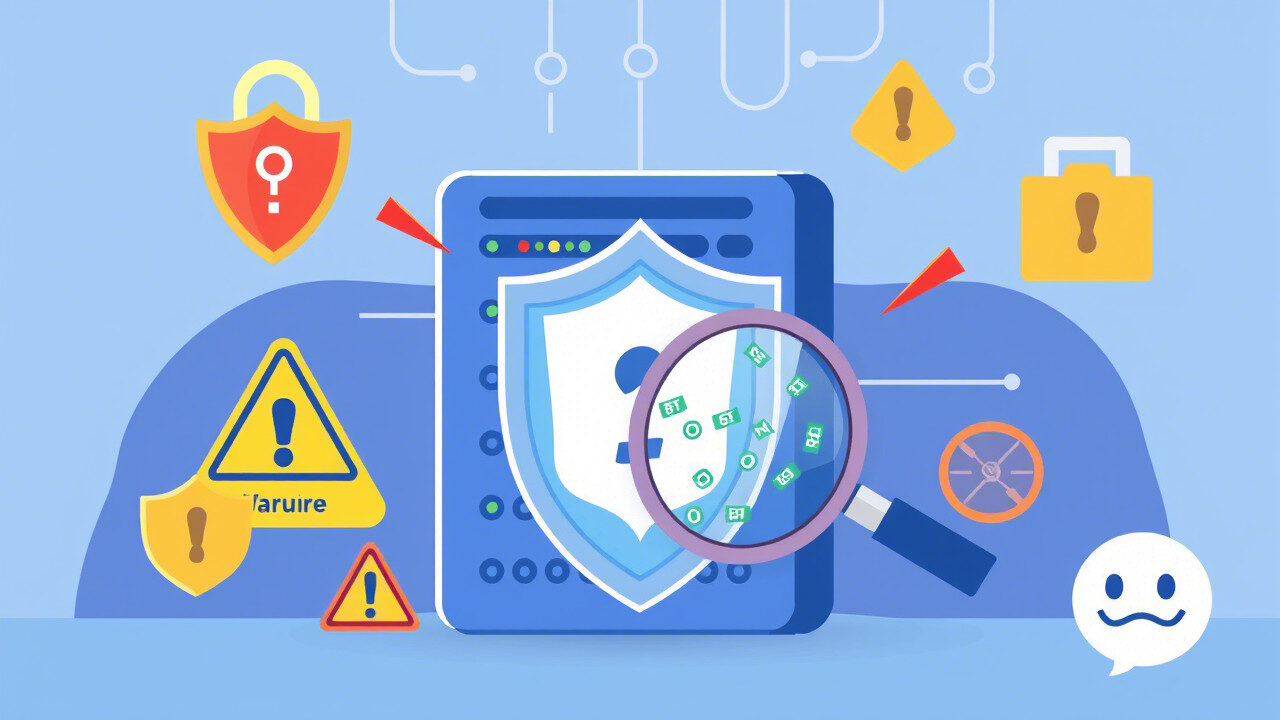Given that Copilot’s AI features enhance coding productivity, it may also inadvertently introduce security vulnerabilities into your code. While Copilot offers some very useful suggestions, the code it recommends is not always safe. Generally speaking, if the suggestions offered by Copilot are neither reviewed nor understood properly, there is a chance that insecure codes can make their way into your project.

In this article, we will provide a step-by-step process for mitigating any security vulnerabilities that Copilot may induce via its suggestions. We will teach you how to identify insecure code and enforce secure coding practices while also using vulnerability scanning tools to keep your codebase safe.
Why Copilot Suggestions May Introduce Security Vulnerabilities
It generates many code suggestions from huge datasets, but it doesn’t always propagate secure coding practices. It also uses outmoded libraries as well as weak authentication techniques and improper handling of data that could possibly lead to security weaknesses.
Common Vulnerabilities Introduced by Copilot Suggestions:
- SQL Injection: Copilot may suggest code that doesn’t sanitize user inputs, leading to potential SQL injection vulnerabilities.
- Insecure Authentication: The suggested code might use weak password hashing techniques or insecure authentication methods.
- Exposure of Sensitive Data: Suggestions might involve hardcoding sensitive data like API keys or passwords, which increases the risk of data exposure.
By understanding these potential vulnerabilities, you can proactively fix any issues introduced by Copilot’s suggestions and implement secure coding practices.
🛡️ Step 1: Review Copilot Suggestions for Security Best Practices
Although Copilot does speed up coding, you should review each suggestion manually, especially where the code is sensitive or security-critical. This is the first step to identifying insecure code and determining if it follows the comendable security principles.
Why Is Reviewing Suggestions So Important?
Early Identification of Vulnerabilities: Promptly reviewing them can help identify potential security issues before it becomes entrenched in the codebase.
Understand the Implications: By reviewing suggestions, you can start to consider their possible security implications and alert on changes.
How to Review Suggestions:
Inspect a program: Find patterns like hard-coded credentials, inappropriate validations, or weak encryption.
Verifiable by Secure Coding Guidelines: This would mean that the code must be verified against secure coding guidelines, such as the OWASP Top 10, CWE or ISO/IEC 27001.
Conduct Peer Reviewing: After identifying a weakness, it would be wise to have a colleague or security person look at it for a second opinion.
Action Tip: Utilize linters or code quality tools like SonarQube or ESLint to automatically flag insecure code.
🛡️ Step 2: Implement Secure Coding Practices
So after going through the code, the immediate step is to substitute those insecure suggestions with secure coding practices such as using secure libraries, following best practices, and hardening one’s code against known vulnerabilities.
Why Secure Coding is Essential:
Reduces Exposure: Reduces potential attacks from SQL injection, cross-site scripting attacks (XSS), and buffer overflow.
Builds Trust: Secure coding establishes confidence in code as well as trust with the end users and the stakeholders.
How to Do Secure Coding
Use Parameterized Queries for Database Access: Avoid using string concatenation to build queries, as this is a common source of SQL injection vulnerabilities.
Hash Passwords using Strong Algorithms: Use modern hashing algorithms like bcrypt or PBKDF2 for any password storage; that is, MD5 or any such algorithms must not be used.
Proper Input Validation: Validates, sanitizes each and every user input to avoid injection attacks or malicious input-related problems.
Action Tip: Consider using secure coding standards like OWASP Secure Coding Practices or adopting CIS Benchmarks to guide your development process.
🛡️ Step 3: Use Vulnerability Scanning Tools
Vulnerability detection has existed throughout the software development life cycle, where recognized vulnerabilities perhaps were the ones introduced by Copilot into the code base. The tool can identify known issues and recommend ways to fix them.
Why Should a Vulnerability Scan Be Done?
Automated Detection: Scanners are tools to identify new vulnerabilities with an aim to save time and money and ensure coverage.
Maintained Vigilance: The scanners put their eyes on the code so that any new threats or vulnerabilities can be continuously identified, thus helping secure the project.
Running Scan:
Static Application Security Testing (SAST): Tools such as SonarQube, Checkmarx, and Fortify scan your codebase, looking for vulnerabilities and security issues, without executing the code per se.
Dynamic Application Security Testing (DAST): OWASP ZAP or Burp Suite are the DAST tools running during penetration tests to discover vulnerabilities against the application during the execution mode.
Software Composition Analysis (SCA): Tools such as Snyk, WhiteSource, or OWASP Dependency-Check to scan 3rd party libraries and dependencies for known vulnerabilities.
Action Tip: Set up automated vulnerability scans as part of your CI/CD pipeline to ensure security is continuously integrated into your development process.
🛡️ Step 4: Keep Dependencies Up to Date
Security holes are made from time to time due to outdated dependencies or obsolete libraries that may create vulnerabilities through the applications in which they get used. Suggestions that are made by Copilot may have codes that would have dependencies upon such old or vulnerable packages. Updating these actually ensures that you are always in the best position regarding security.
Keep Dependencies Updated:
Patching and Fixes- Dependency updates make sure that all security patches and bug fixes come into your implementation.
Minimized Attack Surface: The older libraries are more known to criminals for having unsafe vulnerabilities, thus reducing the risk of exploitation from them.
Updating Dependencies
Stay Updated: Regularly audit libraries using Dependabot or npm audit for any security updates.
Testing New Versions: Always test the new version of the library to ensure that it won’t break anything in the existing functionality before the actual updating process.
Using a trustworthy Origin: Libraries must always be installed from official package managers like npm/pip/Maven and not from other unpublished sources.
Action Tip: Consider using Automated Dependency Management tools like Renovate to streamline and automate the update process.
🛡️ Step 5: Educate Your Development Team on Secure Coding Practices
Security vulnerabilities are often introduced due to a lack of awareness or understanding of secure coding practices. Educating your development team on security concepts can help them spot and avoid vulnerabilities, improving the overall security of your codebase.
Why Education Is Crucial:
- Proactive Security: Educated developers are more likely to follow best practices and spot vulnerabilities before they become issues.
- Collaboration: A team that is aligned on security principles can better collaborate to identify and resolve potential problems quickly.
How to Educate Your Team:
- Security Training: Provide your team with training on secure coding, OWASP Top 10, and common vulnerability types.
- Security Champions: Assign a security champion to ensure that security best practices are followed across the development lifecycle.
- Collaborative Reviews: Encourage the team to work together on code reviews and share security lessons learned from previous vulnerabilities.
Action Tip: Utilize resources like OWASP security training materials or SANS courses to upskill your development team on secure coding practices.
Final Thoughts: Protecting Your Code from Security Vulnerabilities

In the above steps, you will be able to minimize the probability of security breaches via Copilot suggestions. This can only happen through strong secure coding practices accompanied by conducting checks on vulnerability scannings and having all the dependency libraries updated. These are some of the primary steps toward securing and robust coding.
Why TechNow Is the Best IT Support Service Agency in Germany
TechNow is the finest IT support services agency that specializes in the securing of code and mitigation of security vulnerabilities for businesses of all sizes. Our professional team provides custom-made solutions designed for specific security needs such as vulnerability scanning, secure coding practice, and comprehensive IT support. TechNow is here to handle security vulnerability issues or ensure best security practices are implemented so as to secure your business against potential threats.






